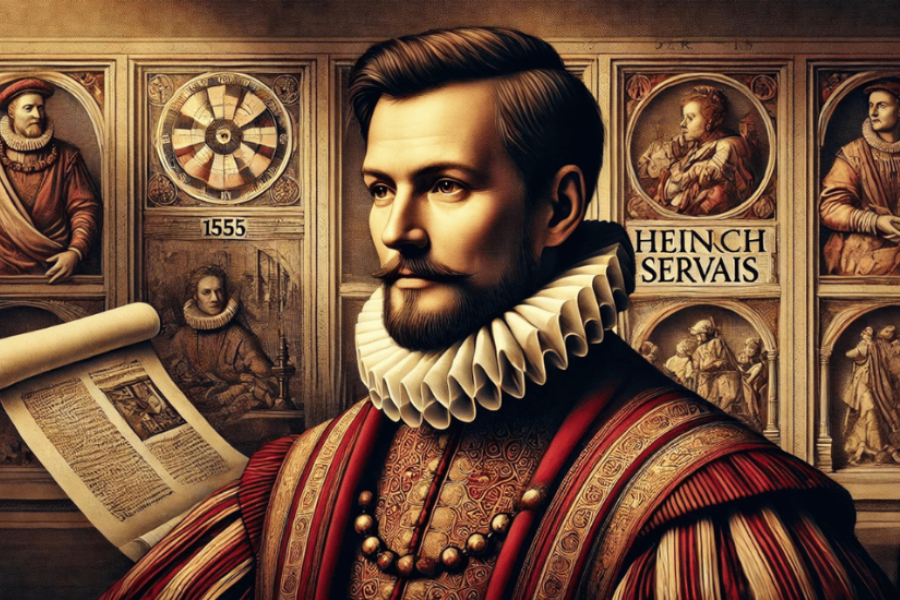The Enduring Legacy of the 1555 portrait servais
The 1555 portrait servais stands as a significant masterpiece from the 16th century, encapsulating the essence of its subject with exceptional intricacy. This artwork occupies a noteworthy position in art history, shedding light on the stylistic elements, cultural context, and symbolic meanings characteristic of the Renaissance era.
The Artist Behind the Portrait
Though the creator of the 1555 portrait servais remains anonymous, the painting is frequently linked to the Flemish Renaissance style. Its meticulous attention to detail, realistic representation, and focus on the subject’s personality echo the characteristics seen in the works of notable Flemish painters of the period, such as Hans Holbein the Younger and Anthony van Dyck.
Flemish Renaissance Art
During the Renaissance, Flemish artists were renowned for their precise detail and their focus on the human figure. They aimed to portray their subjects in a realistic and expressive manner. The 1555 portrait servais fits seamlessly within this artistic movement. Flemish painters were especially adept at using oil paints, allowing them to create lifelike textures and intricate details in their portraits.
Understanding the Portrait of Servais
The Portrait of Servais is a compelling representation of its subject, believed to be an influential figure of the time. The subject’s attire, facial expression, and posture provide insightful clues about his status and personality.
Key Features of the Portrait
- Clothing: The subject dons luxurious dark fabrics, signifying wealth and social status. This style was typical of the European elite in the 16th century.
- Facial Expression: The calm and serious expression on Servais’ face conveys authority and confidence.
- Posture: Servais is depicted in a formal stance, underscoring his importance and dignified presence.
Symbolism in the Portrait
Renaissance portraits often included symbolic elements, and the 1555 portrait servais is no different. Each component of the portrait—from the background to the clothing—reflects the subject’s identity and role.
- Wealth and Status: The elegant clothing and formal posture represent Servais’ societal position.
- Background Elements: While the backdrop is understated, it serves to focus attention on the subject, highlighting Servais’ stature and expression.
Historical Context of the Portrait
The year 1555 marked a transformative period in European history, characterized by political and religious upheavals. Many affluent individuals commissioned portraits during this time to capture their likeness and preserve their legacy. These artworks often adorned homes and public spaces, symbolizing power and influence.
The Role of Portraiture in the 16th Century
In the 16th century, portraits transcended mere likenesses; they functioned as declarations of status, power, and legacy. The 1555 portrait servais epitomizes this trend, immortalizing the subject in a manner that emphasizes his social standing.
The Impact of the 1555 Portrait Servais on Art History
The 1555 portrait servais continues to be a subject of study due to its artistic and historical relevance. Art historians and scholars examine the techniques employed and the cultural messages conveyed through the work. It stands as a significant example of Flemish Renaissance portraiture, offering insights into the lives of prominent figures of the era.
Influence on Later Artists
While the artist’s identity is unknown, the techniques demonstrated in this portrait—such as intricate detailing and realistic texturing—have become defining features of portraiture in subsequent centuries. Artists who followed this tradition maintained a focus on capturing their subjects with realism and depth, making this portrait a pivotal example of the evolution of portraiture in Western art.
Conclusion
The 1555 portrait servais is a vital piece of Renaissance art, symbolizing both the individual it depicts and the cultural milieu of its time. Its intricate portrayal of Servais provides valuable insights into the style, symbolism, and societal norms of 16th-century Europe. Today, it remains an essential resource for understanding the history of portraiture and the Flemish Renaissance.





